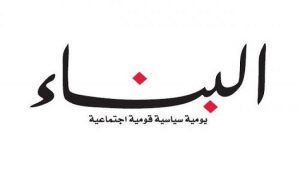
November 27, 2024
Nasser Kandil
• The speech delivered by the occupying entity’s Prime Minister, Benjamin Netanyahu, announcing the approval of a ceasefire, warrants critical analysis. It comes fourteen months after Hezbollah opened a supporting front for Gaza from the Lebanese border. Netanyahu responded, seventy days ago, by declaring a full-scale war on Lebanon using everything the entity and its allies in the West and the region have at their disposal. The campaign aimed to deal a decisive blow to the resistance by eliminating Hezbollah, the heart, body, and soul of this movement through strikes that left thousands in Hezbollah’s ranks, including senior leaders, either martyred or injured and culminated in the assassination of its Secretary-General, a symbolic and operational leader.
• In his address, Netanyahu attempted to rally settlers in northern settlements, praising their supposed resilience. However, this was deceitful. Contrary to his words, they did not exhibit the steadfastness envisioned by Ben-Gurion when these settlements were designed as fortified communities. He urged settlers to return, claiming the war had ensured their safety, another falsehood. He touted the ceasefire agreement as “good” because it could be implemented by the occupying forces, specifically vowing to confront Hezbollah’s rearmament or reconstruction efforts. Yet, Netanyahu knows from the 18 years between the 2006 Lebanon war and the present conflict that what his army faced this time far surpassed prior challenges.
His promise for perpetual vigilance is a pledge for instability. How can settlers believe in this promise of security and return, when they have already indicated they will not, knowing that their security is unattainable as long as the military has failed to neutralise Hezbollah’s strength? The very fact of the ceasefire is proof of this failure.
• Netanyahu declared that his government and military fought and won across seven fronts, claiming international pride in these “achievements”. Let us evaluate these so-called achievements:
In Gaza, Netanyahu boasted of assassinating leaders which, while true, is neither novel nor impactful on resistance operations. The martyrdom of leaders has never derailed Gaza’s operational capabilities, as evidenced by its continued resilience on the battlefield. So, what exactly is being touted as a military achievement?
Netanyahu further claimed hostage-recovery as an achievement. However, these recoveries were secured through negotiations, not military operations, and his reliance on force led to the deaths of several captives.
In Yemen, Netanyahu touted the targeting of Al-Hudaydah and coordination with an international coalition. Yet, he failed to mention that his efforts failed to guarantee safe passage for a single ship to the besieged port of Eilat, and even U.S. naval assets have faced repeated attacks in the Red Sea. So, what “achievements” is he attempting to claim?
Regarding Lebanon, Netanyahu emphasised killing leaders and destroying missiles. However, the critical question remains: did the resistance’s operational capacity diminish? Did the destruction of missiles significantly affect the resistance’s ability to sustain war, inflict harm, and drive millions of settlers into shelters, eventually forcing the ceasefire?
Shifting to Iran, Netanyahu claimed success in damaging its defenses. Yet, what the world witnessed was a painful Iranian response to a largely ineffective Israeli strike.
As for Syria, Netanyahu cited systematic disruption of arms transfers. But the battlefield tells a different story, with advanced weaponry increasingly reaching resistance forces inflicting pain deep within the entity.
Ultimately, Netanyahu’s “achievements” amount to the destruction of civilian infrastructure, the killing of women and children, and the starvation of entire populations. Are these the accomplishments that earned global “admiration”? Or was the International Criminal Court’s arrest warrant against him for war crimes his true accolade – a nobel prize? Even Israel’s allies in Europe have signaled their readiness to hand him over.
• Netanyahu offered three reasons for accepting the ceasefire: focusing on Iran, rebuilding and rearming the military, and decoupling the Gaza and Lebanon fronts. Of these, the second is the most honest. But can a military that requires rearmament and rehabilitation simultaneously escalate in Gaza or wage war against Iran? Does Gaza truly need firepower engagement from the Lebanon front, given that it has fulfilled its role over the past months and Gaza has proven its military capability to advance its resistance independently, whereas the occupying army’s fragility has necessitated the Lebanese ceasefire?
With Lebanon’s ceasefire, widespread outrage over the crimes in Gaza and question of why Gaza remains under siege will resurface, alongside renewed global solidarity with its plight and calls for a similar ceasefire there.
Netanyahu understands that public support within the occupying entity for a war on Lebanon played a decisive role in his decision to escalate the conflict against Lebanon and Hezbollah. This support served as a counterweight to a volatile domestic scene, where protests had swelled to half a million by mid-July, demanding a deal with Gaza – a demand overshadowed by the war on Lebanon. With this war now drawing to a close, those protests will eventually resurface, reigniting the call to resolve Gaza’s situation. But can the lack of armaments and the weakened state of the entity’s military sustain a prolonged war on Lebanon? And if its depleted and under-equipped army struggles in Lebanon, how can it hope to wage war on Iran?
• Netanyahu boasted about his so-called “freedom of action” secured through American guarantees, to prevent Hezbollah from rearming and rebuilding its strength. Yet, was it truly American constraints that restrained him between the wars of 2006 and 2023? Or was it, as every analyst and expert in the entity repeatedly stated, Hezbollah’s deterrent power – its will and capacity to retaliate? And does that reality change now with a ceasefire? The resistance is likely to initiate its post-ceasefire equation with direct questions: When will the occupying forces withdraw from the Lebanese part of Ghajar? What about the contested points and the Shebaa Farms explicitly referenced in Resolution 1701? When will aerial and maritime violations end, all of which are acts of aggression and breaches of the ceasefire? These violations grant the resistance the right to self-defense as enshrined in the agreement, which is rooted in Resolution 1701. At a minimum, the resistance will respond to every enemy air incursion over Lebanon by deploying its drones over occupied Palestine in reconnaissance missions.
The second equation is clear: without a full withdrawal to the 1949 Armistice Line, there will be no full retreat beyond the Litani River.
• Despite the sustained blows it endured, the resistance succeeded in forcing the occupying entity to accept – or, more accurately, to beg for – a ceasefire. The entity’s army, battered and in dire need of reorganisation, faces significant deficits in weaponry and ammunition. In doing so, the resistance has seized control of the reins of this ‘beast’ and returned it to its pen, as Hezbollah’s Deputy Secretary-General Sheikh Naim Qassem had earlier promised.




